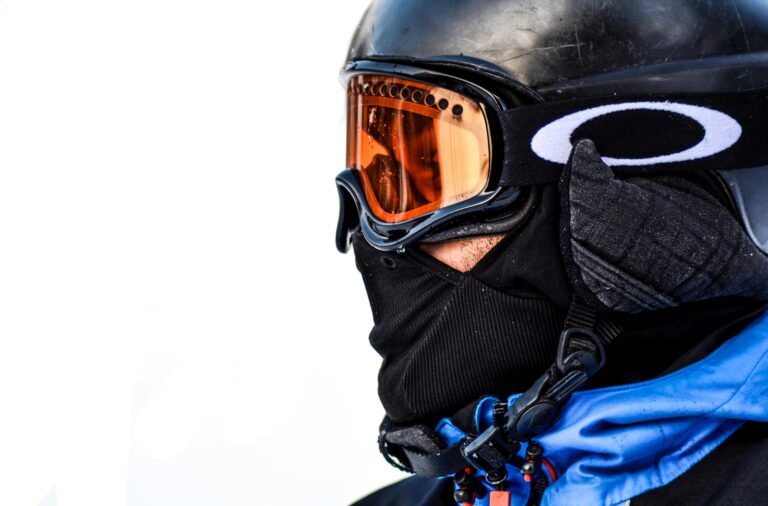Have you ever stopped to think about how skiing and ice skating compare? They both take place during winter and get you moving, but they each offer their own kind of rush. I’m excited to break down what makes each sport tick, so you can figure out which one fits you better—whether that’s bombing down snowy mountains or gliding effortlessly on ice.
Skiing and ice skating share similarities in terms of physical skills, especially balance and coordination, but each sport requires distinct techniques and adaptations to different surfaces. Both offer exhilarating experiences, engaging a wide range of audiences, from casual participants to serious athletes.
Both sports draw you in with the appeal of gliding, whether that’s over snow or ice. Skiing has you strapping on skis and tackling slopes, mixing speed and strategy. Ice skating, by contrast, is about graceful moves on a frozen surface with specially designed skates. Skiing often attracts adrenaline junkies chasing thrills, while ice skating pulls in those who love fluid motion and style.
Core Skills Required for Skiing and Ice Skating

Key skills for skiing include edge control, turning, and stopping; while for ice skating, they consist of gliding, stopping, and toe pushes. Beginners in both sports rely heavily on balance and coordination to build confidence and proficiency.
Here’s what you’ll want to focus on:
- Skiing:
- Edge Control: Imagine your skis as your steering wheel—mastering the edges helps you carve your path.
- Turning Techniques: Slopes demand smooth, precise turns. Nail this and you’re in control.
- Body Positioning: Staying athletic isn’t just style points—it keeps you balanced and less prone to falling.
- Ice Skating:
- Gliding: Think of it like surfing on ice—smooth, flowing, and downright cool.
- Stopping Techniques: Knowing how to brake stops falls before they happen.
- Balance: Like walking a tightrope, keeping steady on your skates is essential for both safety and finesse.
If you’re starting out, skiing can feel trickier at first because you’re balancing on moving boards on a hill. Ice skating’s basic movements are often easier to pick up, which can make it less intimidating.
How Do Terrain and Surface Impact Skills?
The differences in skiing on snow versus skating on ice create unique challenges and learning curves for each sport. Skiers must adapt to a range of terrains, while ice skaters contend with varying ice thickness and surface quality.
| Aspect | Skiing | Ice Skating |
|---|---|---|
| Surface | Snow-covered (varying textures) | Smooth, solid ice |
| Terrain Complexity | Downhill, flat, moguls | Typically flat, indoor or outdoor |
| Terrain Adaptation Skills | Essential for varied slopes | Required for skating styles such as speed, figure, or hockey |
Skiing throws some wild cards at you—bumps, steep pitches, crunchy or powdery snow. You’ve got to be ready to adjust on the fly. On ice, the quality can shift too. A thin, rough patch can throw off your moves, especially if you’re trying spins or jumps. Both sports keep your body sharp by demanding quick thinking and adaptability.
What are the Health Benefits of Skiing and Ice Skating?
Both skiing and ice skating offer significant cardiovascular and muscle engagement benefits, with skiing burning about 600 calories per hour and ice skating approximately 400 calories, depending on the intensity.
Here’s what they do for you:
- Cardiovascular Fitness: Your heart and lungs get a solid workout, pushing endurance and stamina.
- Muscle Engagement:
- Skiing: Mostly hits your legs—from quads to calves—basically a killer leg workout disguised as fun.
- Ice Skating: Targets your core and upper body too, since you’re balancing and pushing off constantly.
- Joint Health: Both sports improve flexibility and strength, and if you’re smart about it, they help reduce injury risk.
Doing either helps you build strength, balance, and coordination, so you feel more agile and confident—not just on snow or ice, but off it, too.
How Does Learning Experience Differ Between Skiing and Ice Skating?
For novices, skiing often presents a steep learning curve due to the need for balance on sloped surfaces and the intricate gear involved. In contrast, ice skating typically allows for faster mastery of basic skills such as gliding and stopping.
Here’s what to expect:
- Skiing: Managing all that gear and staying balanced on a hill can be overwhelming. You’ll have days where you feel like a newborn deer. But with practice, it clicks.
- Ice Skating: You’ll probably worry about falling—which is normal—but you can get the hang of gliding and stopping faster than you might expect. It’s often less intimidating at first.
Once you put in the time, skiing rewards you with control over tricky slopes. Ice skating brings early wins in smooth, graceful movement. Both paths have their own kind of joy.
What are the Accessibility and Age Considerations for Both Sports?
Both skiing and ice skating cater to multiple age groups, but accessibility varies; ice rinks are typically more plentiful than ski slopes. Ice skating can be introduced to younger children ages 3-4, while skiing is often better suited for ages 5-7.
A few things to keep in mind:
- Ice Skating: You’ll usually find rinks close by, especially in cities. It’s easy to start young (think preschoolers) and plenty of classes are available for adults and seniors, too.
- Skiing: You might have to travel to mountains or resorts, which can be a bit more planning and expense. Still, there are family-friendly lessons everywhere ready to welcome newbies.
Depending on where you live, your family might naturally gravitate to one over the other. It’s worth scouting out what’s nearby before making your choice.
Can Skills from One Sport Benefit the Other?
The transferability of skills between skiing and ice skating is notable, primarily in balance and coordination. Experts believe mastering one can accelerate the learning process in the other.
Here’s something I’ve seen firsthand: people who know ice skating often pick up skiing faster, especially because they already have solid balance and can glide smoothly. It’s like learning to ride a bike—once you’ve got balance, switching wheels isn’t as hard.
Community and Social Aspects: Skiing vs. Ice Skating
Both sports foster strong social communities through clubs, group lessons, and competitions. Participants often find friendships, creating lasting bonds that enrich the experience.
Both have social perks:
- Skiing: Ski clubs and schools offer races, family events, and social hangouts. It’s fun to share your highs and wipeouts with people who get it.
- Ice Skating: Rinks are natural gathering spots. Many host theme nights or competitions with a friendly vibe. Plus, family skate days rock for bonding.
Jumping into either sport usually means you’ll meet people who turn your winter workouts into a social highlight—and maybe even lifelong friends.
FAQ Section
Can I learn either sport as an adult? Yes, adults can absolutely learn both skiing and ice skating. Many ski schools and ice rinks offer specialized programs for adults at all skill levels, ensuring a comfortable and supportive learning environment. The key is to stay patient and enjoy the journey!
Is it possible to transition from ice skating to skiing easily? Yes, transitioning from ice skating to skiing is often easier due to the overlapping skills of balance and movement. Ice skaters generally find themselves comfortable adjusting to the gliding aspect of skiing, making for a smoother transition to the slopes.
What age is ideal to start skiing or ice skating? The ideal age to start varies; generally, ice skating can be introduced as young as 3-4 years, while skiing is often recommended around 5-7 years. However, both sports can be enjoyed at any age with the right equipment and instruction, making participation accessible throughout one’s life.
What common mistakes do beginners make in skiing and ice skating? Common mistakes for beginners include neglecting proper balance, not warming up before sessions, and failing to assess conditions (like ice or snow quality). Taking lessons, practicing regularly, and being mindful of technique can help avoid these pitfalls and promote safer enjoyment!
If you want to sharpen your skills, check out this video on Ice Skating Basics — it covers all the foundational moves and tips.
Whether you’re leaning into the thrill of skiing or the flow of ice skating, both offer a fantastic way to stay fit and have fun. Explore what clicks for you and enjoy the ride!
For a deep dive, here’s a helpful tutorial on Ski Techniques that breaks down everything you need to know.




